There has been much recent talk about strengthening Sino-Russian relations, but few have considered the implications for their policies toward North Korea. In this exchange of views, we present the arguments for the revival of a triangle linking the three in opposition to the US-ROK-Japanese triangle, and we follow with arguments to the contrary. This leads us to reflect on the Cold War principles guiding Chinese and Russian policies toward North Korea and the extent to which they are reviving. The emphasis is on thinking about regional security and reunification, and there is recognition that Kim Jong-un is shunning diplomacy for now, delaying triangularity.
Positive Scenario II: This Triangle Will Take Shape
Negative Scenario II: This Triangle Will Not Take Shape
Sergey RadchenkoThe argument in favor of a “Sino-Russian-North Korean” triangle in Northeast Asia rests on the notion that Beijing and Moscow need North Korea for reasons that outweigh their broader political and economic interests and that North Korea has no choice but to go along with the triangular arrangement, because the alternative would be complete isolation, regime meltdown, and, eventually, absorption by South Korea. In defending this line of argument, Gilbert Rozman draws parallels with the Cold War era, suggesting that what we are seeing in Northeast Asia today is reminiscent of the sort of regional alignment that we witnessed during the Cold War. Rozman points to four “themes” of Cold War-era reasoning with regard to North Korea that regained prominence in the 2000s. First, he argues that North Korea is seen as a geopolitical asset by both Beijing and Moscow; second, it acts as a bulwark against the ideological threat represented by South Korea and its regional allies; third, Pyongyang is an old friend that is bolstered for what may be called sentimental reasons; and, lastly, North Korea is being used by Beijing or Moscow or both as a bargaining chip in the bigger political game.
Rozman is right to argue the case of geopolitics. Beijing and Moscow’s thinking about North Korea was from the start closely linked to the imperative of preventing US domination of the Korean Peninsula. Of course, geopolitical reasoning had another important angle: for much of the Cold War, China and the Soviet Union competed for influence over North Korea, a circumstance that Pyongyang successfully exploited to its advantage, which it cannot do today. Nevertheless, geopolitical reasoning is often cited as the main factor in China’s cautious support for Pyongyang. Rozman is right to say that preservation of the North Korean regime is more important to the Chinese than Kim Jong-un’s access to nuclear weapons, and the reasons are clearly geopolitical. Russia’s position, however, is less clear cut.
The second—ideological—theme is not as relevant as it once was to understanding the dynamic of international relations in Northeast Asia. By alluding to this theme, Rozman draws a parallel between the revolutionary doctrine that linked the “fraternal” regimes of China, the Soviet Union, and North Korea, and the current anti-Western sentiments embraced by President Vladimir Putin and also evident in the discourse of “China’s rise.” I would argue that the parallel is misplaced. Unlike Marxism-Leninism (in the Soviet or Maoist interpretation), which prescribed support for “fraternal” regimes and far-flung Communist movement as a revolutionary duty and defined the boundaries of something called the “socialist camp,” today’s anti-Westernism of Putin or Xi’s variety is nowhere nearly as ideologically rigorous. It has rather more in common with the notoriously amorphous notions of third world solidarity that failed to gain ground in the 1970s exactly because these disparate third world states defined themselves not by what they were but by what they were not. Russia and China face similar challenges. There are no ideological imperatives in play that would commit Beijing or Moscow to support North Korea in quite the same way as the Chinese and the Soviet leaders often felt compelled to do during the Cold War.
The third theme highlighted by Rozman is that of long-standing, traditional friendship between China, Russia, and North Korea. This is a very important observation that has something of a constructivist bend. The notion of “lips and teeth” as a euphemism for the closeness of the Sino-North Korean relationship still holds a certain sway over the minds of Chinese policy makers, in spite of the general air of wariness and dissatisfaction that has permeated this relationship in recent years. I would argue that for the Chinese, the question is ultimately bound up with the crisis of the CCP’s domestic legitimacy. The Korean War—as a moment China “stood up” to the United States—is an important part of the domestic legitimacy narrative. This is the reason why, as Rozman notes, Xi continues to insist that the war was “just.” “Abandoning” North Korea would undermine this narrative and further weaken the regime’s legitimacy. For China, in other words, North Korea is a domestic issue more even than a foreign policy issue. Russia’s North Korea policy is less susceptible to sentiments of this kind. Although there is a North Korea “lobby” of a kind in Moscow—primarily retired military brass (for nostalgic/ideological reasons) and the Ministry of Development of the Far East (for bureaucratic reasons)—, such advocates are in the end inconsequential in the bigger picture of Russian policy making. Although Putin’s regime faces grave challenges, the regime’s legitimacy is in no way connected to a Korea-centered narrative.
Fourthly, Rozman points out, correctly, that Beijing and Moscow support North Korea for tactical reasons, as a bargaining chip in the broader political maneuvering. This is most strongly the case for Russia. Putin sees in North Korea a platform for advancing Russia’s standing in Northeast Asia at a time when Moscow has preciously few levers for extending its influence in the region. But this is, in fact, quite different from the Cold War, when Soviet engagement with North Korea had a deeply strategic and ideological character. One can scarcely think of an example during the Cold War when the Soviets tactically used their leverage with North Korea in negotiating with other regional players, but this has been the rule in recent years, most prominently in Moscow’s efforts to develop cross-Korean transport and energy corridors (while having Seoul pay for them). The Chinese game, as Rozman explains, is more complicated and subtle, though it is clear that China is not averse to advertising its position in North Korea for leverage with Seoul, Tokyo, and Washington. But the notion that Russia and China both play on their connections with North Korea for tactical reasons undermines the concept of an emerging “triangle” in Northeast Asia, unless of course one merely sees it as a triangle of convenience, but such triangles are least durable and do not perform equally well from issue to issue.
Thus, although Rozman rightly argues that the five versus one scenario for Korean nuclear talks has been increasingly replaced by a three versus three scenario, the latter is conspicuously absent in other regional spheres, most obviously in economic relations. In political terms, as well, both China and Russia remain committed to a strong dialogue with South Korea, and each in fact has more rigorous and dynamic relations with Seoul than they do with Pyongyang. In the meantime, as the recent inter-Korean emergency talks suggest, the North and the South are able and willing to talk to each other without allowing Russia, China, or anyone else, at the table. Looking more broadly, North Korea has practically no place in Xi Jinping’s two grand initiatives: the Silk Road economic belt and the Maritime Silk Road. Pyongyang is more important for Russia’s regional posturing but not nearly as important as the bilateral relationships with China and South Korea or the difficult but ongoing dialogue with Japan. China and Russia are both interested in the survival of the regime in Pyongyang. For as long as Kim Jong-un plays it safe and displays at least some willingness to engage in dialogue with North Korea’s neighbors, the status quo can and will be preserved. It is a status quo that is perhaps best described not as a geometrical arrangement of any kind but as a particular balance of interests of all of the six parties to this intricate game.
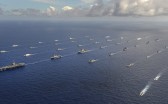
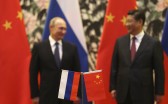
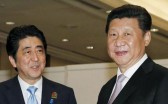
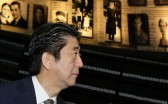
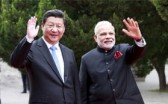
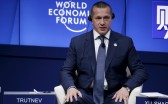
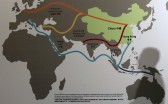


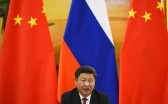
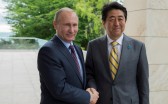
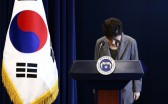
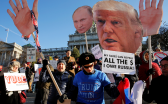
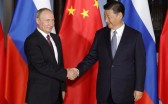
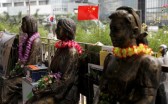
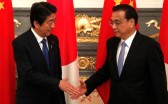
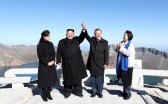
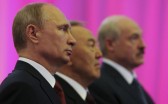
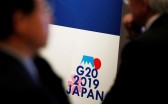



 Print
Print Email
Email Share
Share Facebook
Facebook Twitter
Twitter LinkedIn
LinkedIn